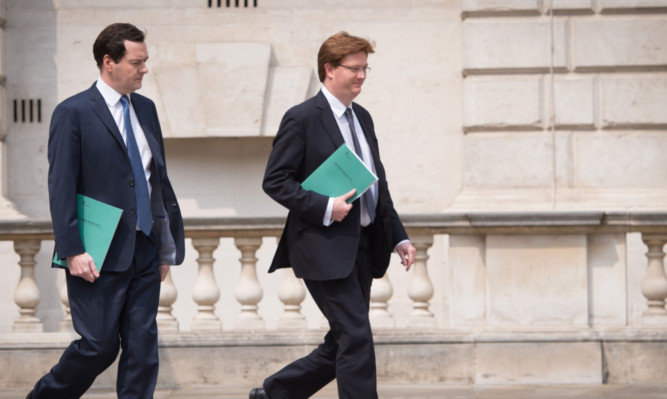The Scottish Government will have to cut around half a billion pounds before the next general election under Chancellor George Osborne’s spending plans.
Despite seeing less trimmed than other areas, on average departments will have to make savings of 8% thanks to the £11.5 billion overall reduction, so Scotland did not entirely escape the squeeze of Wednesday’s UK Spending Review announcement as it was told to find savings of 2%.
UK secretary of state for Scotland Michael Moore said the country would benefit from increased spending for capital projects as well as being relatively protected from cuts in its resource budget compared to the rest of the UK.
Increased borrowing powers mean more money 12.9% in real terms, £3.3 billion in total for 2015-16 will be available for capital projects such as infrastructure and “shovel ready” projects, but the cash will have to be paid back.
Mr Moore said: “The Scottish Government has asked for additional capital resource and the UK Government has delivered it. They must now use it to invest in Scotland and help the economy grow.
“This good news is coupled with the fact the Scottish resource budget will be about flat cash in 2015-16 significantly better than the reductions across the rest of the UK.
“Being part of the larger UK economy and pooling resources from a wide UK tax base allows Scotland to have a stable budget that can be allocated from Edinburgh.”
Finance secretary John Swinney said Scotland’s capital budget shows an overall reduction cut in the conventional capital budget by the UK Government of 26% in real terms since 2010.
He added the announcement confirms a real terms reduction in the Scottish Government’s total DEL (Departmental Expenditure Limits) budget, excluding financial transactions, of £333 million between 2014-15 and 2015-16.
Mr Swinney said: “The cumulative impact of these cuts is worth £3.2 billion removed from Scotland’s economy.
“At the same time instead of helping households the UK Government has attacked the incomes of working households who have been made to pay for Westminster’s economic mismanagement.
“Scotland did not vote for this disastrous economic agenda and next year we can choose to take a different and better path, with all of Scotland’s resources at our disposal.
“Scotland continues to show a higher employment rate and lower unemployment rate than the UK and youth unemployment figures continue to outperform the UK.”
SNP Treasury spokesman Dundee East MP Stewart Hosie added: “Given that he has failed so far, the Chancellor must explain why he is now set on a course that will make the same mistakes again.”
Labour’s shadow Scottish secretary Margaret Curran said: “The Tories say the economy is healing, but for most families it’s getting worse with prices rising faster than wages, and with the SNP we have a Scottish Government that talks tough, but has failed to deliver what it promised to get the Scottish economy back on track and protect people from the worst of the Tories.”
Liz Cameron, chief executive of Scottish Chambers of Commerce, said: “It is clear that the focus remains on austerity and public spending will remain tight for at least the next three years. Governments north and south of the border will need to do more with less.”
STUC general secretary, Grahame Smith, said: “Funding projects which will not happen for years through cuts in services does nothing to get the UK economy out of the rut the coalition has determinedly created.”
